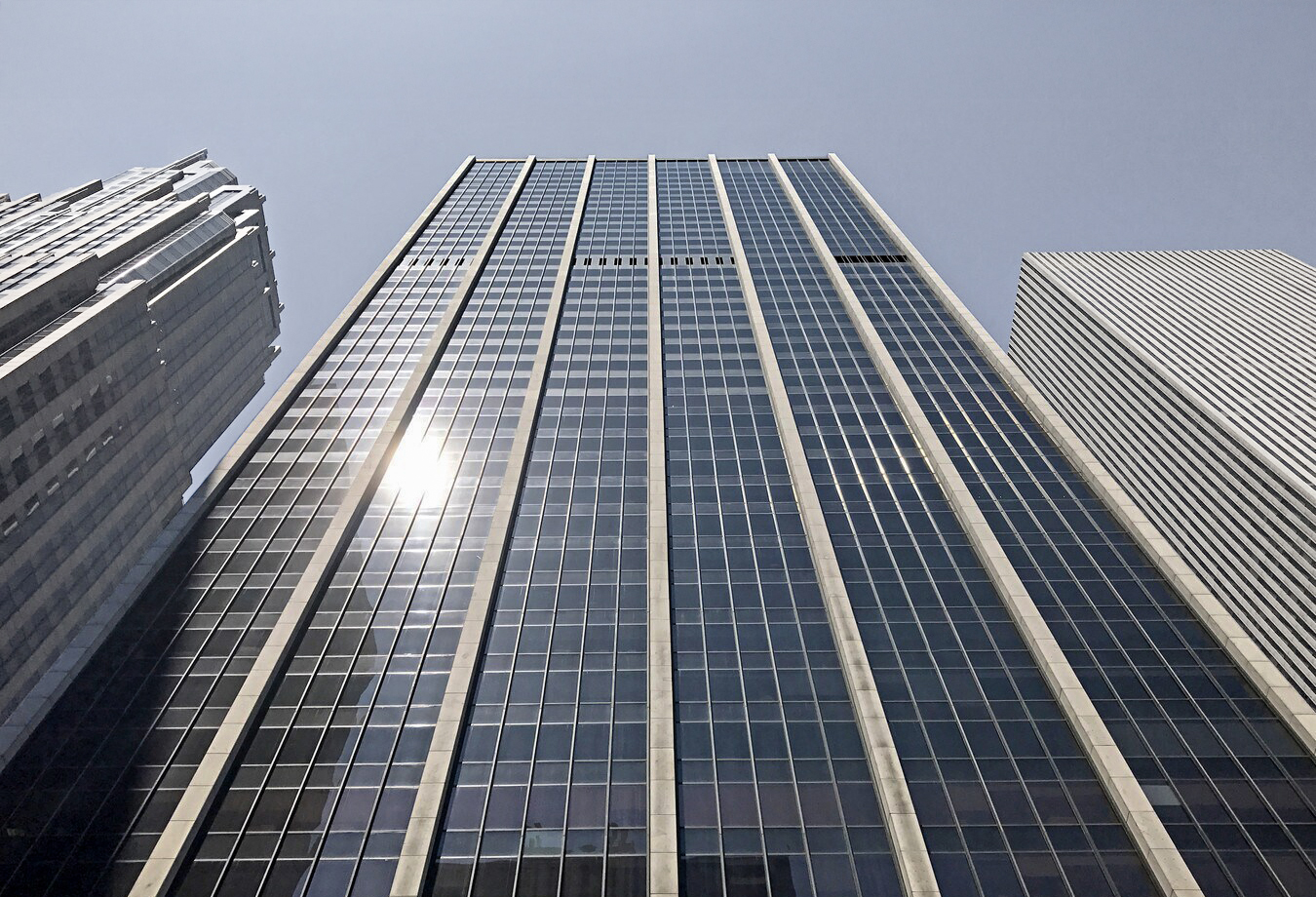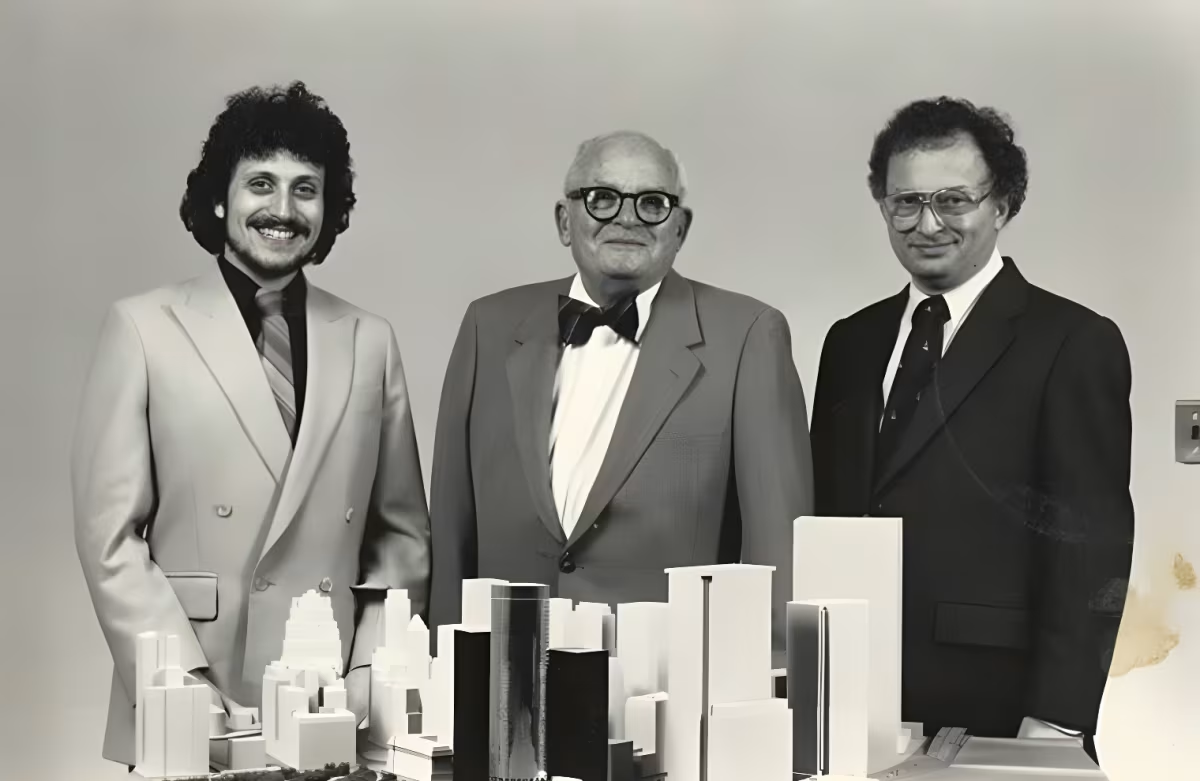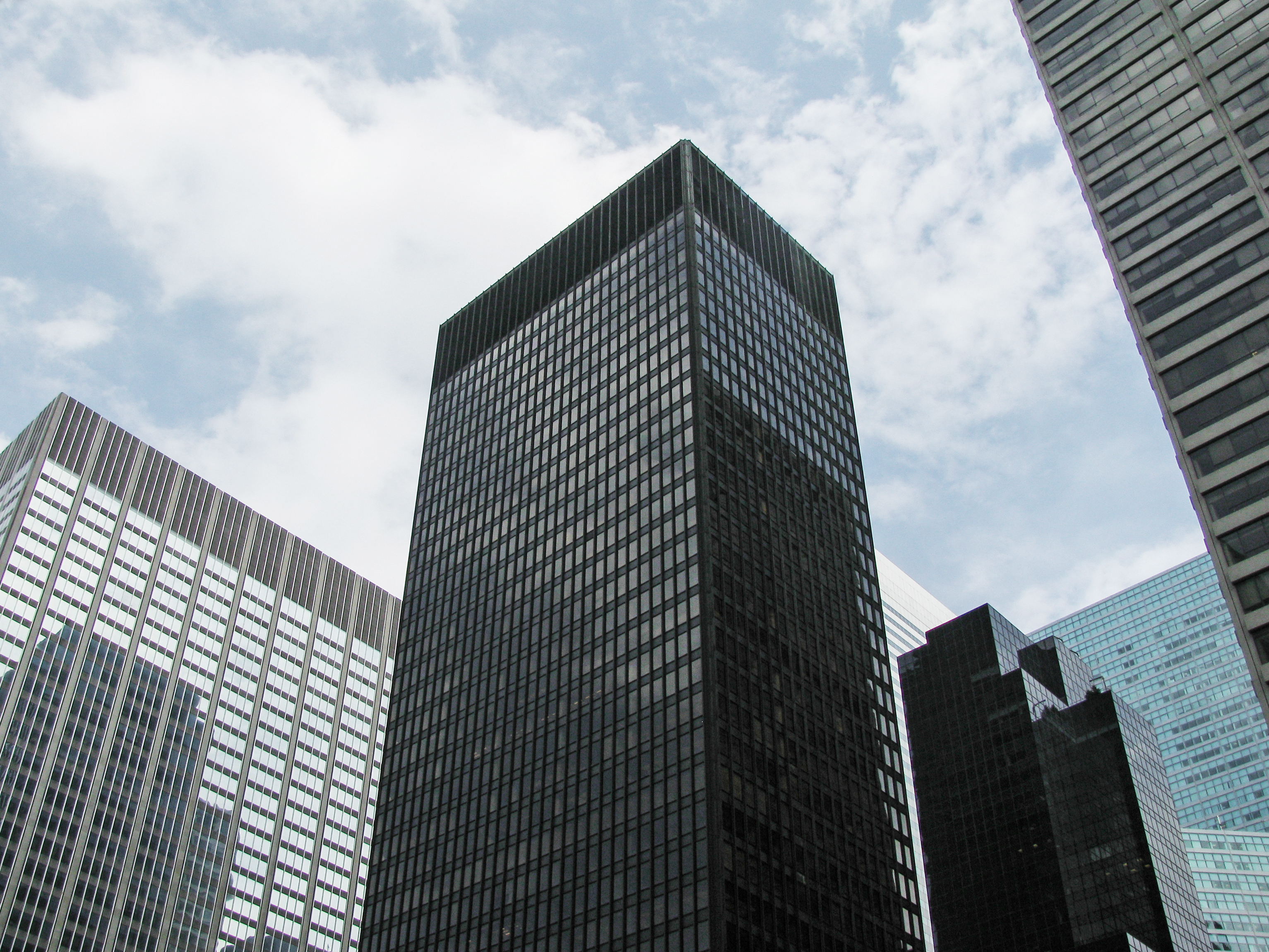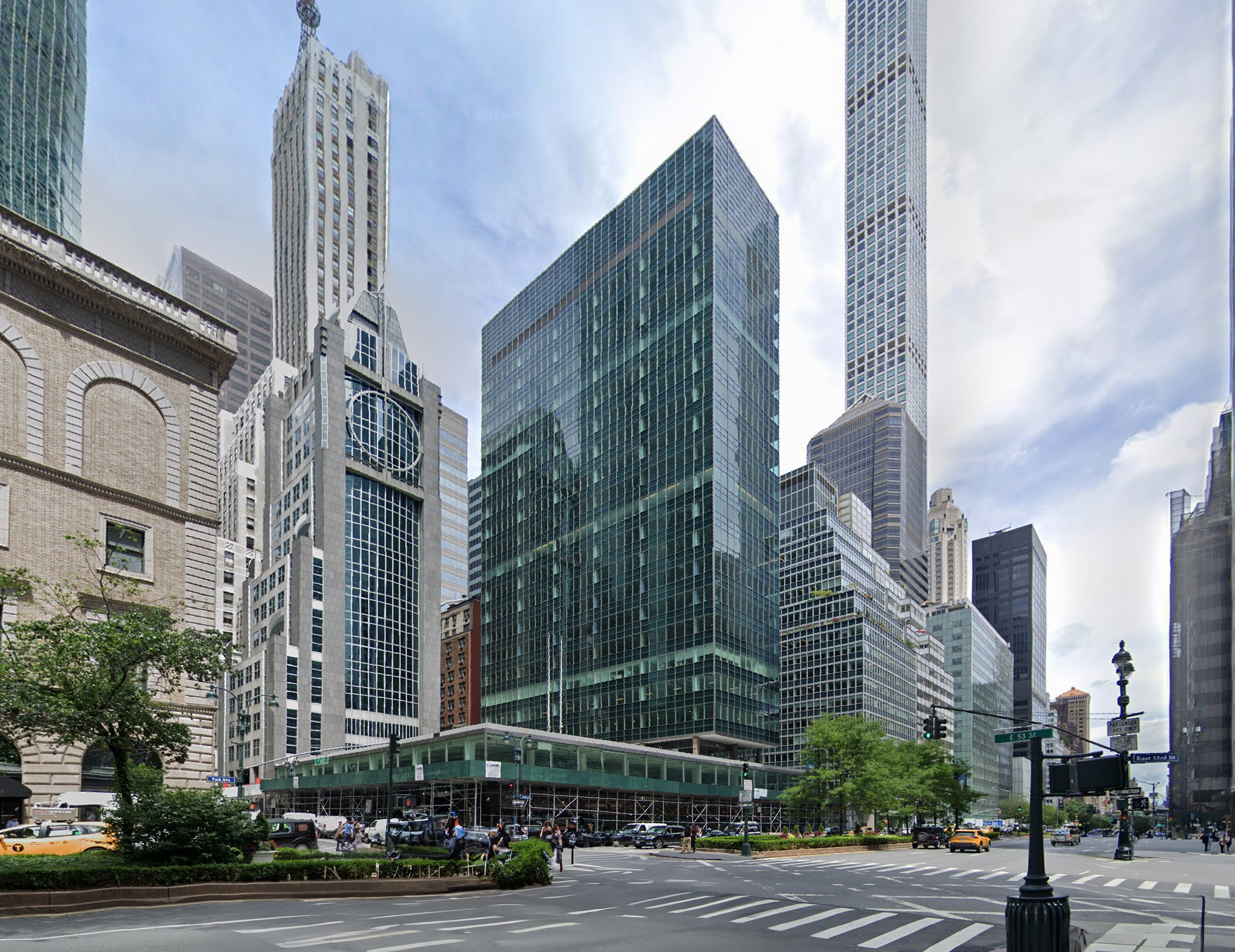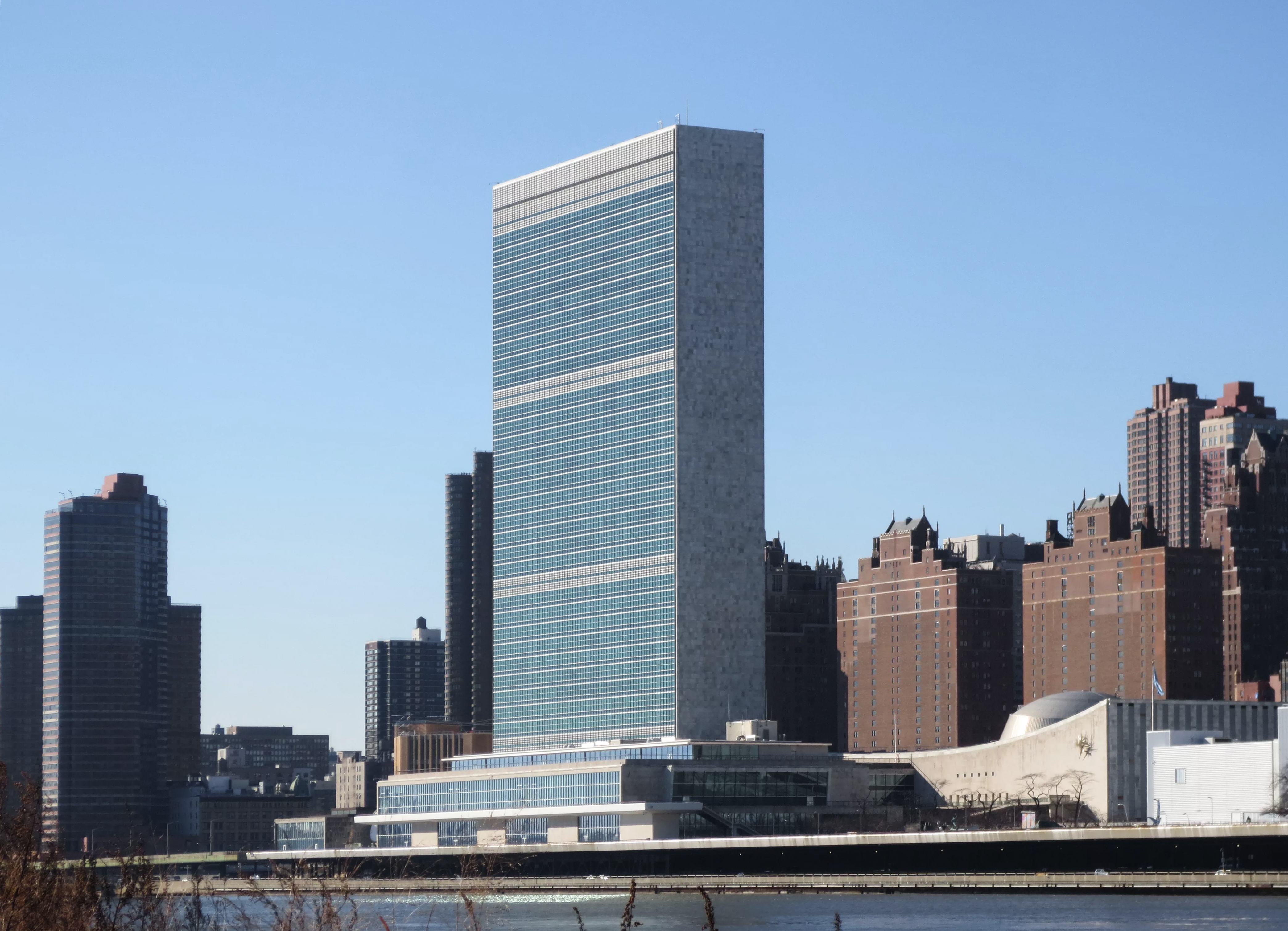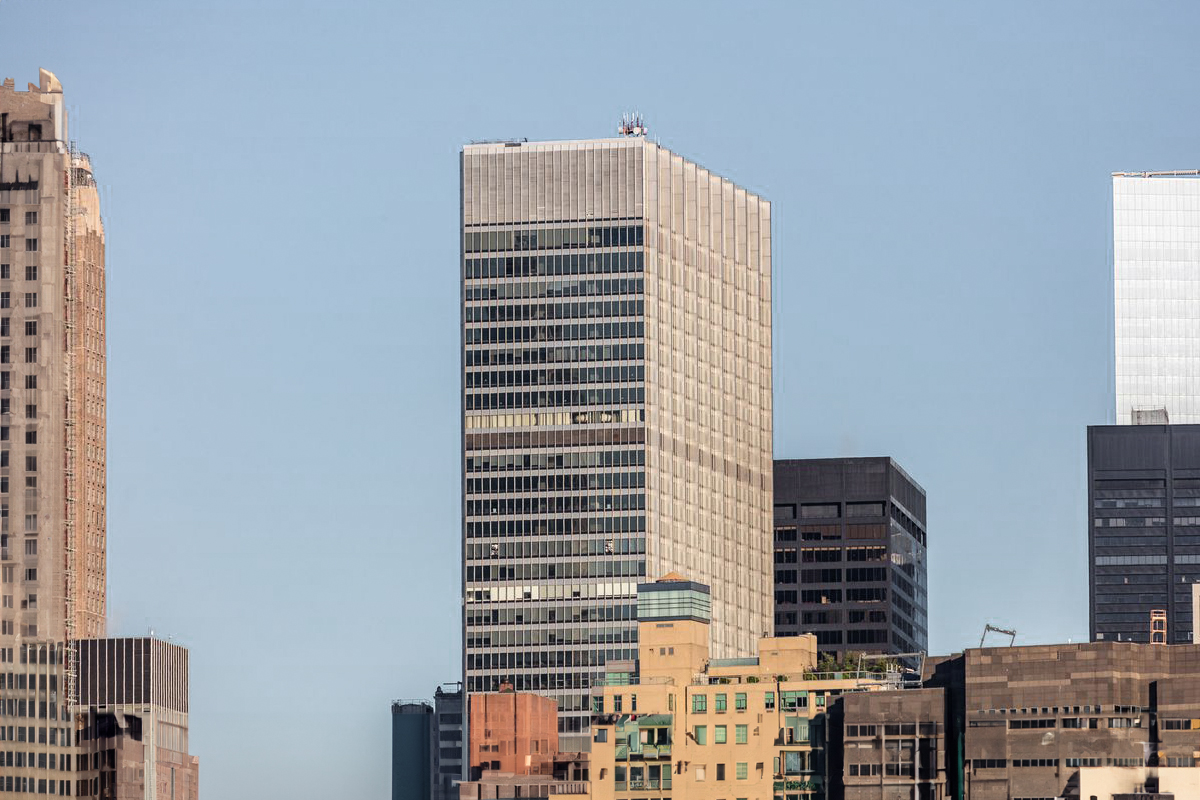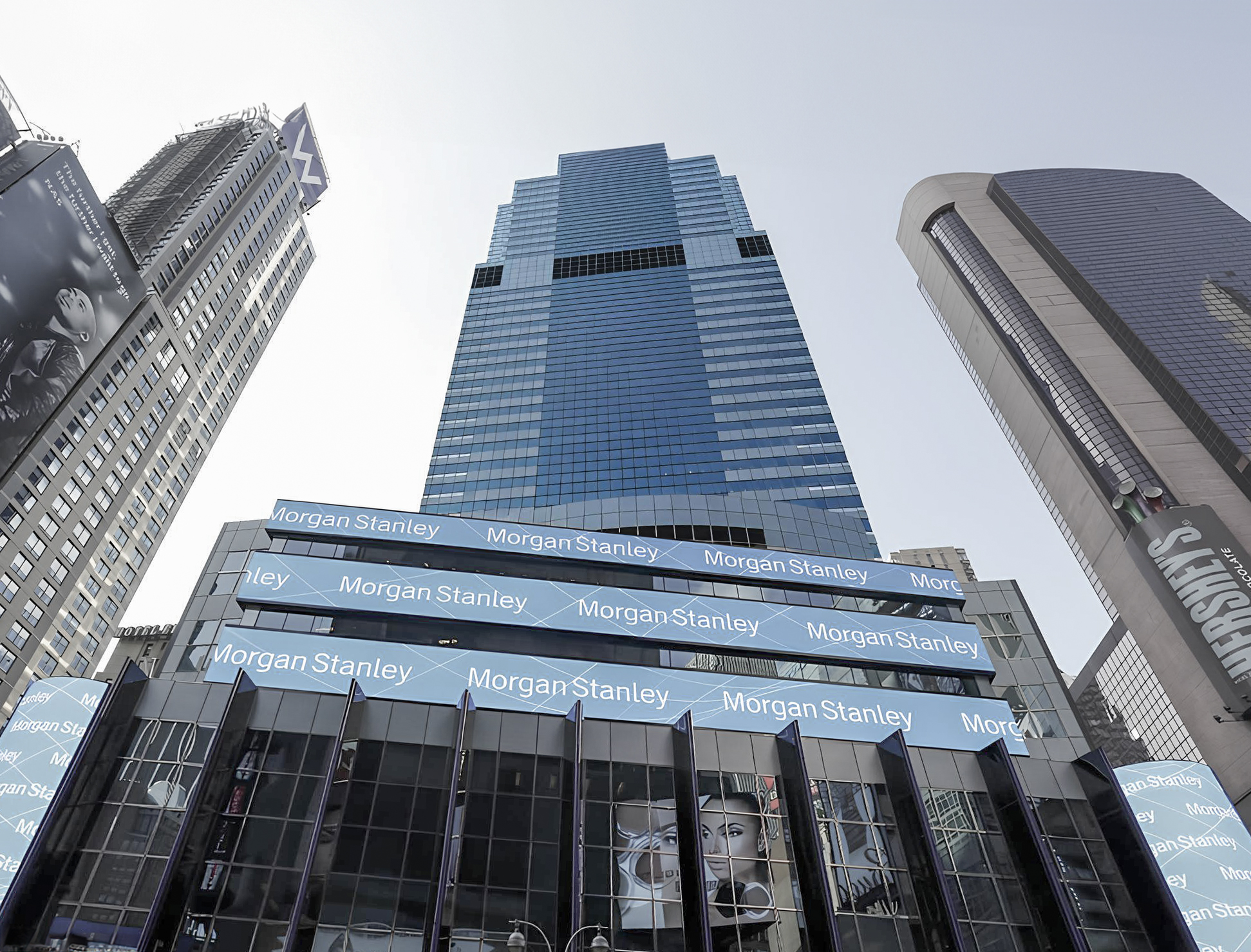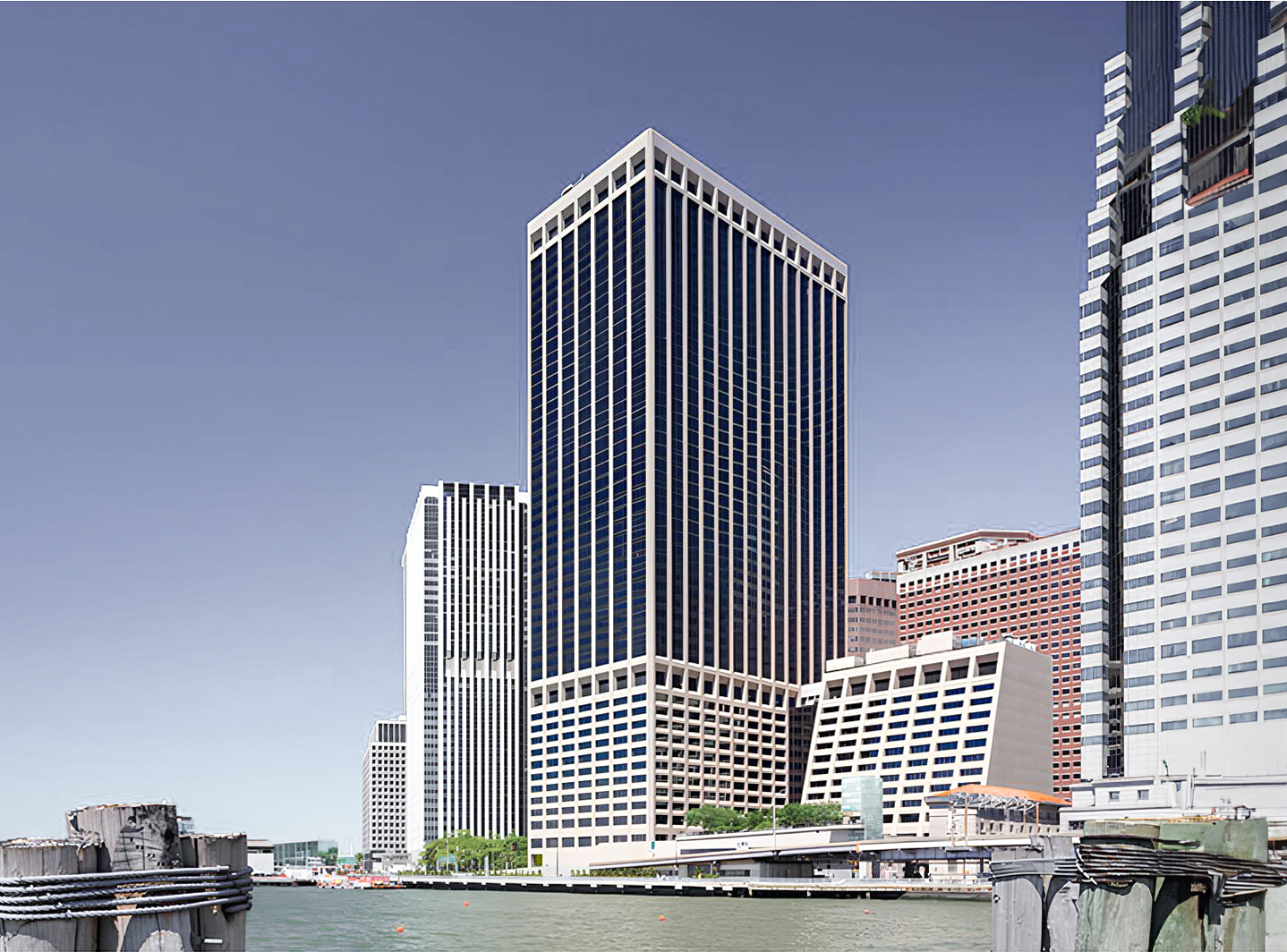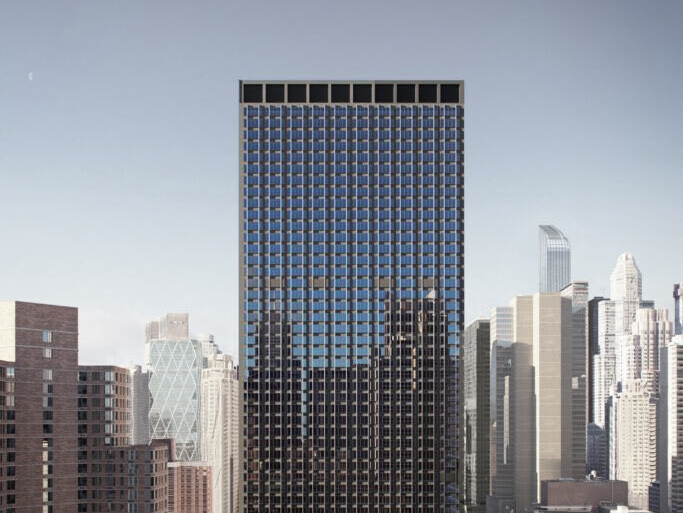The 1185 Avenue of the Americas Building is an International Style skyscraper designed by Emery Roth & Sons, and built in 1971 in New York, NY.
1185 Avenue of the Americas Building is not the only name you might know this building by though. The building is, or has also been known as J.P. Stevens Tower.
Its precise street address is 1185 Avenue of the Americas, New York, NY. You can also find it on the map here.
In 2018 the 1185 Avenue of the Americas Building was awarded with the Building Design/ Repositioning/ Renovation Achievement Award.
The building underwent a major restoration between 2018 and 2019. The architect commissioned to undertake this restoration was MdeAS Architects .
